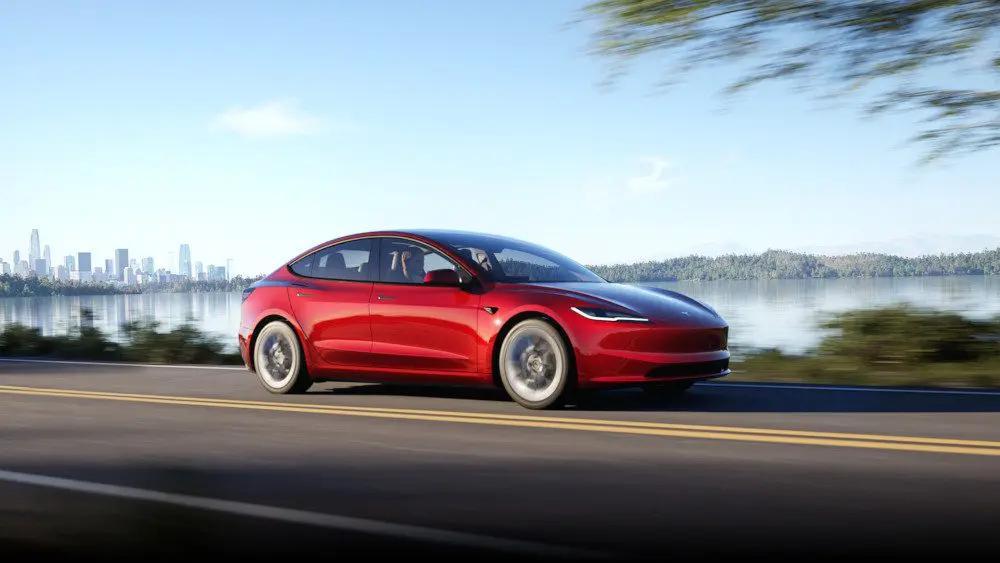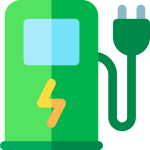
Tesla has quietly expanded its Model 3 line-up in Australia with a new Long Range rear‑wheel‑drive (RWD) variant for the 2026 model year, offering an advertised single‑charge range of up to 750 kilometres. If delivered to market as stated, this would make it the longest‑range battery electric passenger car available in Australia today and a notable step forward for mainstream, affordable long‑range EVs.
What’s changed: bigger battery, more range
The headline improvement comes from a larger Nickel‑Manganese‑Cobalt (NMC) battery pack – Tesla’s specification indicates an increase to around 84 kWh usable capacity for this Long Range RWD. That ups the range by roughly 230 km compared with the existing entry‑level RWD Model 3 and by about 121 km compared with the Long Range all‑wheel‑drive (AWD) Model 3 currently sold in Australia.
Tesla has positioned the new Long Range RWD between the entry RWD and the Long Range AWD in its local pricing ladder. The suggested retail price at launch is $61,990 before on‑road costs, and buyers can choose from several exterior colours (Pearl White as standard, with optional finishes including Diamond Black, Deep Blue, Stealth Grey, Quicksilver and Ultra Red) and two wheel options: standard 18‑inch Photon wheels or optional 19‑inch Nova wheels. Tesla notes the larger wheels reduce range – from 750 km on the standard wheels to approximately 691 km on the 19‑inch set – a reminder that tyre, wheel and trim choices still materially affect real‑world efficiency.
Interior choices follow Tesla’s recent pattern: black as the standard trim with an optional white interior. Orders opened via Tesla’s online configurator with initial customer deliveries expected from November and showroom test drives anticipated from late October, according to the company’s release.
Performance model also gets a bump
Tesla has also upgraded the 2026 Model 3 Performance. The Performance variant receives the same updated NMC chemistry and higher energy capacity, lifting advertised range from roughly 528 km to about 571 km – an increase in the order of 8 per cent. That model retains a punchy drivetrain producing up to 343 kW and a 0-100 km/h sprint time of 3.1 seconds, with a top speed quoted at 261 km/h. Tesla has kept the local starting price for the Performance model at $80,990 before on‑roads.
Charging and infrastructure context
All Model 3 variants continue to access Tesla’s Supercharger network across Australia and New Zealand. Tesla’s regional network now comprises more than 1,000 stalls and dozens of sites rolled out in the previous 12 months, increasing the practicality of long‑distance EV travel for Tesla owners and many non‑Tesla drivers who use adapters and compatible chargers. On high‑power Supercharger stalls, drivers can typically restore a substantial fraction of the battery in around 20-30 minutes, though charging speed depends on state of charge, ambient temperature and the charger’s power rating.
What this means for Australian drivers and the market
- Practical long‑distance driving: A 750 km WLTP‑style figure (or equivalent manufacturer claim) significantly reduces range anxiety for long trips, especially in a market where distances between regional centres can be large. Real‑world range will vary with speed, temperature, payload and wheel choice, but larger usable battery capacity offers more usable range buffer in daily use and on long drives.
- Efficiency remains a Tesla asset: Model 3s have historically been among the most energy‑efficient EVs in their segment, thanks to a combination of aerodynamics, lightweighting and efficient drivetrains. Increasing battery size while maintaining that efficiency is an advantage for owners.
- Price positioning and value: At $61,990 before on‑road costs, Tesla places this variant as a mid‑tier offering that undercuts many luxury EVs while delivering class‑leading range. Buyers should factor in registration, stamp duty, dealer delivery charges and any state incentives or discounts when comparing total on‑road costs.
- Competition and ecosystem: The extended range raises the benchmark for rivals – such as Hyundai, Kia, BYD, Polestar and others – that are increasingly competing on both value and range. It also enhances the resale appeal of Model 3s in the second‑hand market.
- Software and autonomy: Tesla is shipping the new models with its “Full Self‑Driving Supervised” capability. While this adds features and functionality, the capability remains supervised driver assistance rather than fully autonomous driving, and regulation and real‑world performance will continue to be key factors in adoption. Prospective buyers should check the latest software capability, subscription options and local regulatory status before relying on FSD features.
Practical considerations for buyers
- Wheel choice: Opting for larger wheels tends to degrade efficiency and reduce range. The advertised reduction from 750 km to about 691 km on 19‑inch wheels is a good illustration; customers who prioritise range and energy costs should consider the smaller wheel option.
- Charging behaviour: With an 84 kWh pack, owners who predominantly charge at home will find longer intervals between full charges. For road trips, access to high‑power charging remains important – plan routes around charging hubs and allow for variable charging speeds later in the session.
- Warranty, service and total cost: As with any EV purchase, factor in battery warranty coverage, servicing policies and potential software subscription costs (notably for FSD or premium connectivity) when calculating long‑term ownership costs.
- Regulatory and incentive environment: Australia’s federal and state incentives for EVs have varied and are subject to change. Buyers should check current state government programs and dealer offers for rebates, registration incentives or stamp duty concessions.
A cautious note on range claims and real‑world use
Factory range figures are a useful comparative tool, but real‑world results depend on many variables: driving speed, ambient temperature, use of heating/cooling, payload and charging behaviour. For example, sustained highway speeds, cold weather and heavy loads all reduce achievable kilometres per charge. Where possible, read independent range tests and owner feedback once Australian test drives and early deliveries begin to verify real‑world performance.
Conclusion
Tesla’s introduction of a 750 km Model 3 Long Range RWD would be a material development for Australia’s EV landscape, tightening Tesla’s grip on long‑range mainstream electric vehicles and putting pressure on rivals to match range, efficiency and charging convenience. The combination of a larger NMC battery, retained efficiency and access to an expanding Supercharger network makes the offering compelling for buyers who regularly travel long distances or who value range as a priority. Nevertheless, buyers should assess real‑world range expectations, wheel and trim choices, warranty and software costs, and state‑specific on‑road expenses before deciding.
FAQs
Is the 750 km range figure realistic for everyday driving?
The 750 km figure is a manufacturer range estimate and reflects ideal conditions. Real‑world range will be lower and depends on speed, temperature, load, wheel choice and driving style. Expect shorter distances during high‑speed highway driving, in cold weather, or with the larger optional wheels fitted.
How much does wheel size affect range?
Larger and wider wheels typically increase aerodynamic drag and rolling resistance, reducing efficiency. Tesla’s own figures for this model indicate a drop from about 750 km to around 691 km when switching from the standard 18‑inch wheels to optional 19‑inch wheels – a practical example of how wheel choice translates directly to range.
When will Australian buyers get their cars?
Tesla opened orders via its Australian online configurator with first customer deliveries pencilled in for November and test drives expected to start in showrooms in late October, according to the company announcement. Prospective buyers should confirm delivery timing and allocation through Tesla’s official channels as schedules can shift.
Can I charge this Model 3 at any supercharger?
Yes – the Model 3 is compatible with Tesla’s Supercharger network. Charging speeds depend on the particular stall’s power rating and the battery’s state of charge. Tesla’s regional network in Australia and New Zealand has been rapidly expanding, improving long‑distance travel convenience.
What does “Full Self‑Driving Supervised” mean for Australian drivers?
FSD Supervised is Tesla’s advanced driver assistance suite that operates with continuous driver supervision; it is not autonomous driving. Functional availability and permitted use depend on local regulations and ongoing software updates. Buyers should treat it as driver assistance rather than a replacement for attentive driving.
About EV Evolution
EV Evolution is the leading online platform dedicated to Australian electric vehicle owners and enthusiasts. We foster a vibrant community, delivering essential EV news and insights, and enhancing user engagement through our innovative, AI-powered chatbot for dynamic discussions. Our mission is to empower Australian electric vehicle owners and enthusiasts by fostering a vibrant, AI-driven online community that connects, informs, and advances the nation’s electric vehicle landscape.




